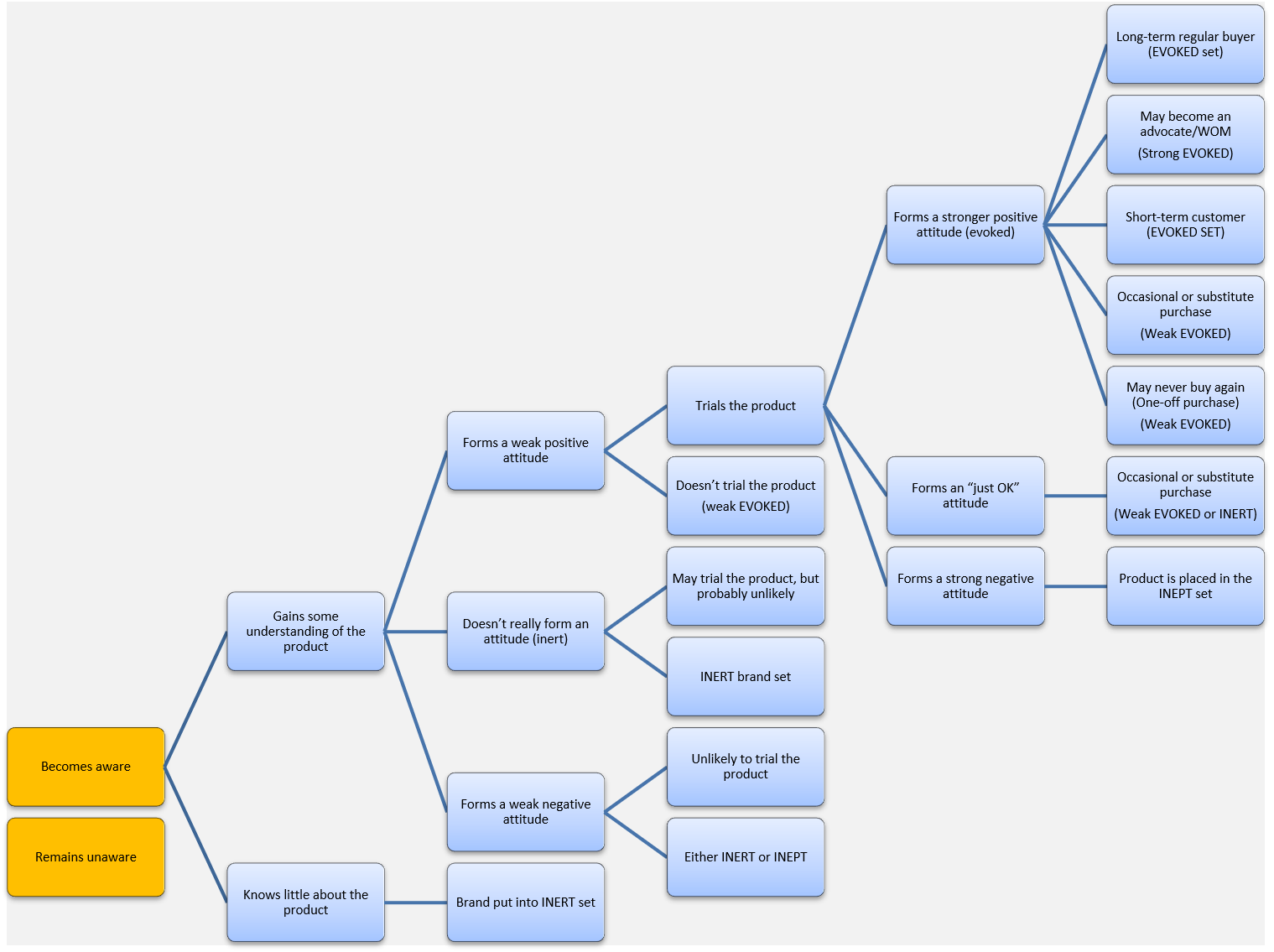Hierarchy of effects model and share of minds and share of hearts
There are numerous hierarchy of effects models that are covered in marketing literature. Probably the most common one was developed in 1961 and is a six stage model usually included in a Philip Kotler marketing textbook. The following diagram is an expansion of the traditional hierarchy of effects model to also include post purchase loyalty.
The traditional hierarchy of effects model has six stages, namely; awareness, knowledge, liking, preference, conviction and finally purchase.
As you can see, in this model there are eight stages that build in the hierarchy of effects communication aspects, along with actual purchase behavior and post-purchase behavior. Therefore, it can be considered a simple customer migration path , which probably encapsulates the majority of marketing communication goals – taking an unaware consumer through the various communication stages to initial product trial to repeat purchase and then finally to a loyal supporter of customer.
Associated marketing metrics
As you can see from the above diagram, there is a commitment shift of the customer from rational loyalty to emotional loyalty. Rational loyalty means that they are justifying the purchase decision based upon key product benefits. However, emotional loyalty means that the consumer is now connected to the brand, likes the brand, and will deliberately seek it out.
In terms of marketing metrics, we typically look at share of mind metrics and share of heart metrics. Share of heart metrics typically measure the behavior and attitudes in the later stages of this customer migration path, as shown in the diagram below.

